South Central India Journey Partially by Train Tour
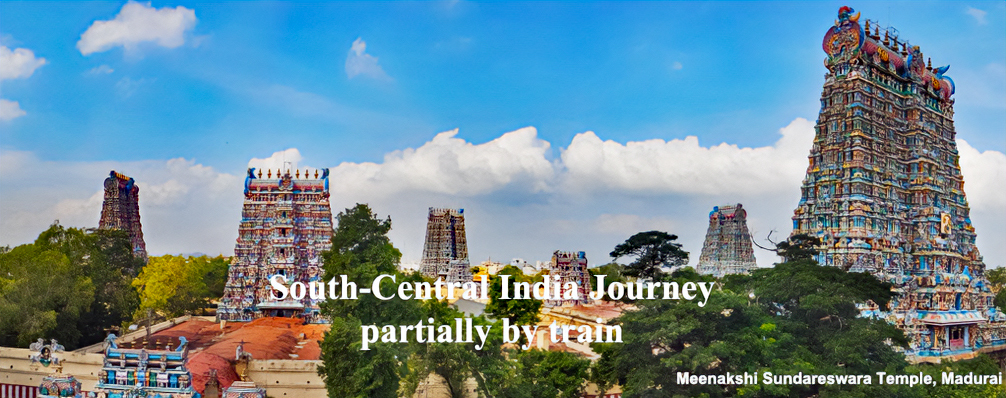
Relish the ever-changing scenery of central high Indian plateau as you glide in the air-conditioned comfort of some of India’s most iconic trains – Jaina Vande Bharat, Ajanta Express and Hampi Express trains. This fascinating journey starts in Mumbai, formerly Bombay – India’s financial capital and renowned worldwide for Bollywood that produces largest number of Hindi films. Relaxing in a speedboat ride in Arabian Sea be amazed by the 5 th /7 th century Elephanta Caves (UNESCO World Heritage Site) that are depict the Hindu deity, Shiva in his various forms. Later enjoy the city sightseeing of Chatrapati Shivaji Maharaj Terminus (formerly Victoria Terminus or Bombay VT), the ensemble of Art Deco Buildings on Marine Drive and elsewhere, as well as Mani Bhawan, Mahatma Gandhi’s dwelling during some of the most important campaigns of India’s freedom.
Aurangabad is home to the simple grave of the last important Mughal Emperor Aurangzeb and Aurangabad Caves. Nearby are the Ellora Caves that contain rock hewn temples of Hindu, Jain and Buddhist religions. The Ajanta Caves are famous for their rock-cut Buddhist Caves, some of which contain ancient paintings. A train away is India’s second Silicon Valley of Hyderabad that was once the capital of Nizams (rulers) who amassed huge fortunes from the Golkunda Gold Mines. Bijapur (now Vijayapura) is renowned for Gol Gumbaj mausoleum, world’s second largest dome. Amidst boulders lie the beautifully sculpted Hindu temples of the Vijayanagar Empire. The journey ends with the sightseeing of Bangalore, India’s most important IT center.
ITINERARY :
Day 1: San Francisco to Mumbai Flight: Board the Air India flight :
Day 2: IN TRANSIT :
Day 3: Mumbai :
Arrive in Mumbai at 2.30 am. Traditional Indian welcome with marigold garlands and transfer to hotel. The journey through central India starts in Mumbai. Earlier known as Bombay, the city is the capital of the Indian state of Maharashtra, the most populated and richest city in India. Bollywood, India's biggest Hindi film producing center is located in this city. After breakfast in hotel, drive to The Gateway of India is an arch monument that was erected to commemorate the landing of King- Emperor George V and Queen-Empress Mary at Apollo Bunder on their visit to India in 1911 CE. Built in Indo-Saracenic style, the foundation stone for the Gateway of India was laid on 31 March 1911 CE. The structure is an arch made of Basalt, 26 meters Home Tours Testimonials Links Blogs Terms & Conditions About us Contact us (85 feet) high. The final design of George Wittet was sanctioned in 1914 CE and the construction of the monument was completed in 1924 CE. The Gateway was later used as a symbolic ceremonial entrance to India for Viceroys and the new Governors of Bombay. It served to allow official entry and access to India during the colonial period. Just opposite the Gateway of India is the older Taj Mahal Palace & Tower Hotel. The older part of the hotel was built in 1903. Next to it was originally the Greens Hotel that was constructed in 1890 and operated by Tata from 1904 until 1972 when the Taj Mahal Tower was added to the complex.
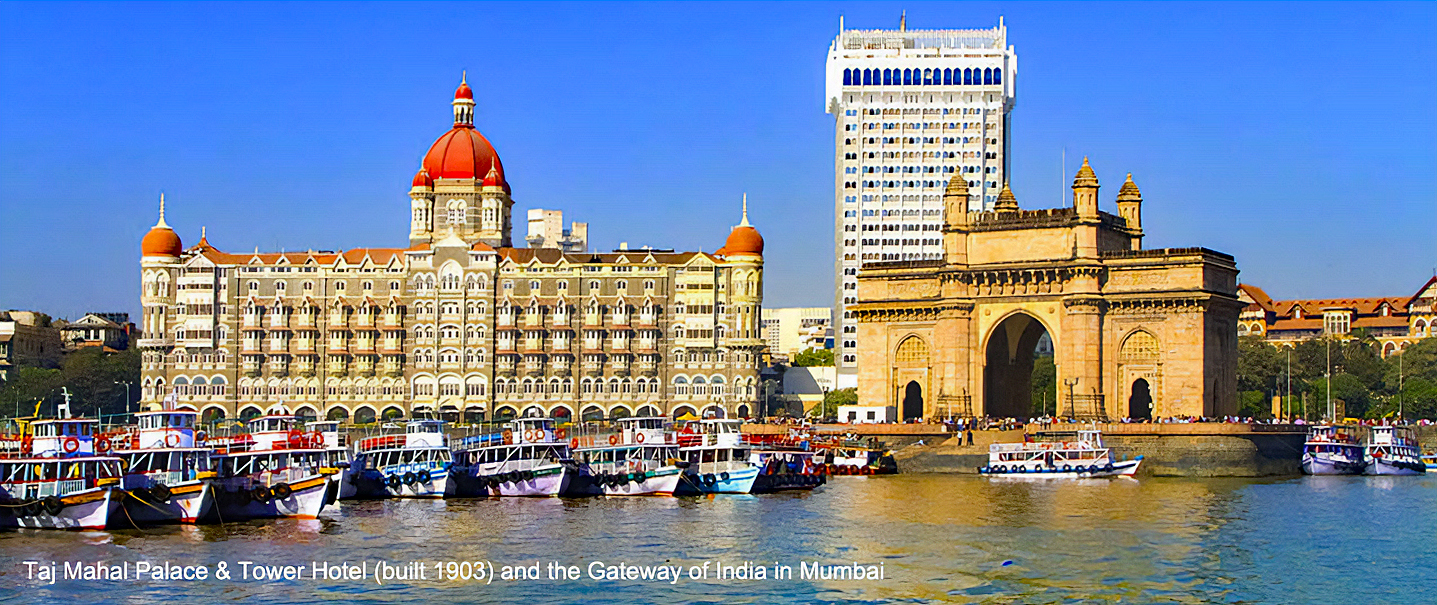
Day 4: Mumbai – Elephanta Caves & city sightseeing :
Enjoy a 25 minutes speedboat ride to Elephanta Caves on the Gharapuri island in Arabian Sea. The rock-cut Elephanta Caves were constructed about the mid-5th to 6th centuries CE. The most important of these caves is the number 1 cave, which measures 128 feet from front of the cave. 23 feet high idol of Sadashiva dominates this cave entrance and represents three aspects of Shiva: the Creator, the Preserver, and the Destroyer, identified, respectively, with Aghora or Bhairava (left half), Taptapurusha or Mahadeva (central full face), and Vamadeva or Uma (right half). Representations of Nataraja, Yogishvara, Andhakasuravadha, Ardhanarishwara, Kalyanasundaramurti, Gangadharamurti, and Ravanaanugrahamurti are also noteworthy for their forms, dimensions, themes, representations, content, alignment and execution. These caves are a UNESCO World Heritage Site.

In the afternoon enjoy an architecture tour of Mumbai starting at Chhatrapati Shivaji Maharaj Terminus, also known by its former name Victoria Terminus, is a historic terminal train station and UNESCO World Heritage Site in Mumbai, Maharashtra, India, Flora Fountain, at the Hutatma Chowk (Martyr's Square), is an ornamentally and exquisitely sculpted architectural heritage monument located at the southern end of the historic Dadabhai Naoroji Road, called the Mile Long Road, at the Fort business district in the heart of South Mumbai, Mumbai, India. Flora Fountain, built in 1864, is a fusion of water, architecture and sculpture, and depicts the Roman goddess Flora; One of Mumbai's landmarks, the Rajabai Clock Tower was completed in the 1870s CE and houses the University of Mumbai's library. Sir George Gilbert Scott modeled the Rajabai Clock Tower on the clock tower of the Palace of Westminster in London. Local businessman Premchand Roychand contributed to the cost of construction and named the tower in memory of his mother, Rajabai. The tower is 85 m (280 ft) tall and has five floors. At a height of 9.1 m (30 ft) from the ground, there are eight statues representing the Indian castes.
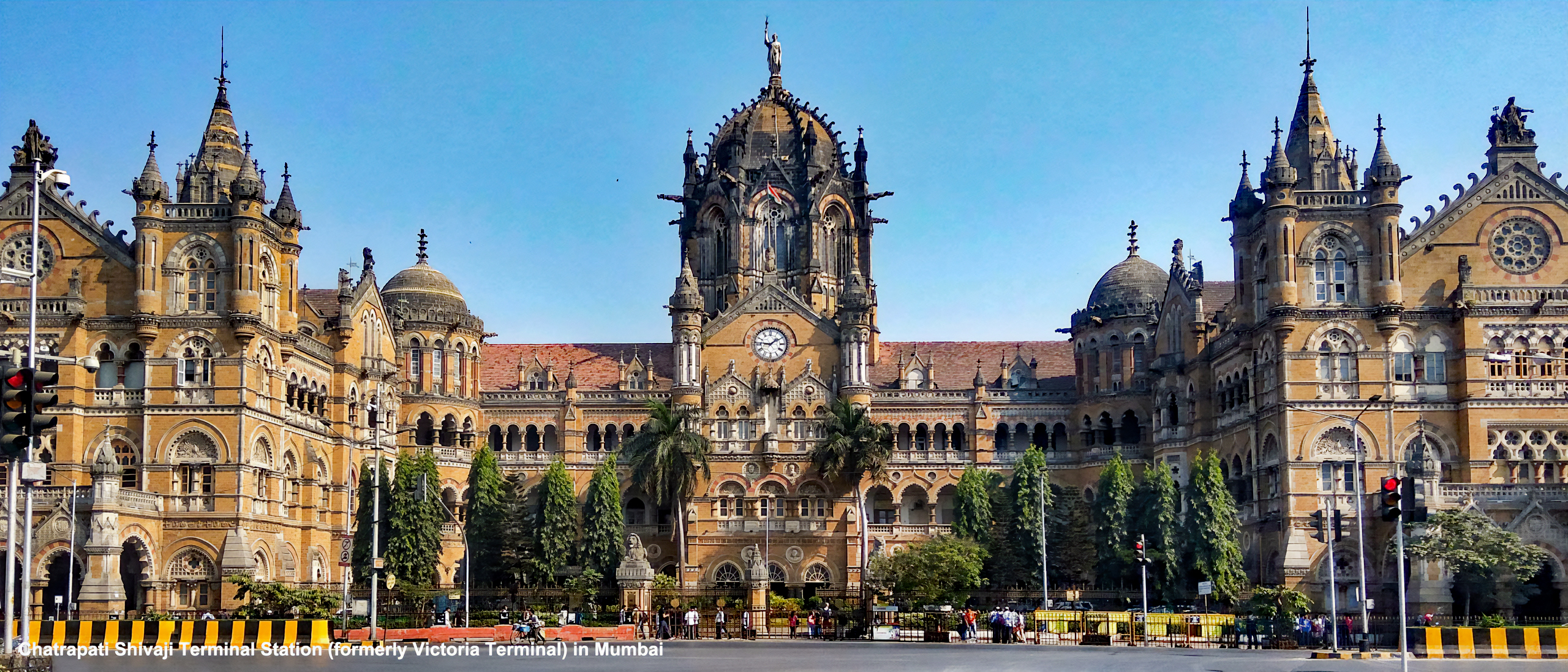
Dhobi Ghat (Mahalaxmi Dhobi Ghat) is an open-air human run laundromat in Mumbai, India. The washers, known as dhobis, work in the open to clean clothes and linens from Mumbai's private people, hotels and hospitals. It was constructed in 1890 CE. One highlight of today's visit is the area where the film 'Slumdog Millionaire' was set, a thriving and industrious quarter called Dharavi.
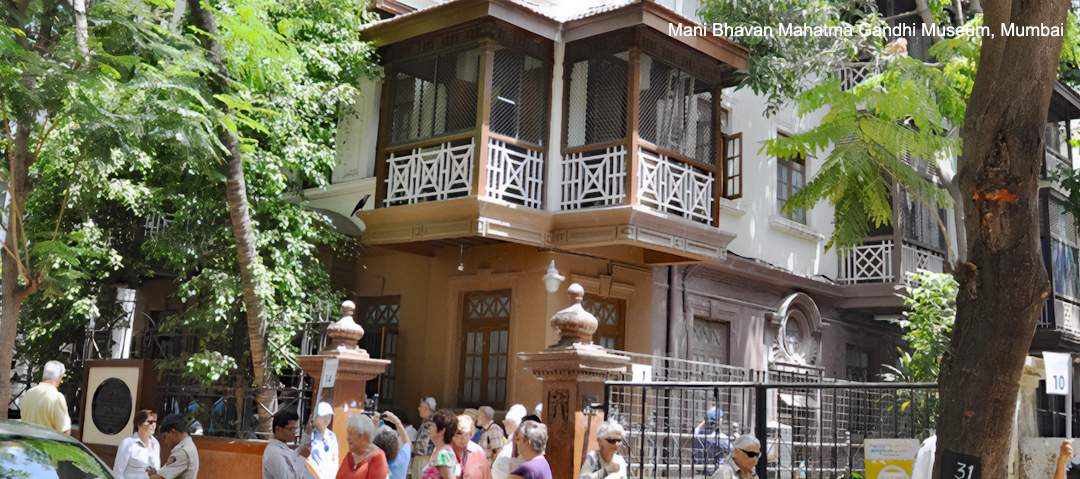
Mani Bhavan was Gandhi's Mumbai headquarters for about 17 years, from 1917 to 1934 CE. The mansion belonged to Revashankar Jagjeevan Jhaveri, Gandhiji's friend and host in Mumbai during this period. It was from Mani Bhavan that Gandhiji initiated the Non-Cooperation, Satyagraha, Swadeshi, Khadi and Khilafat Movements. Gandhiji's association with the charkha began in 1917 CE, while he was staying at Mani Bhavan. In his November 2010 visit, Barack Obama became the first high- profile international visitor to visit the Mani Bhavan Gandhi Sangrahalaya in the last 50 years. Before him, only Martin Luther King Jr. had visited Mani Bhavan in the 1950s; the Hanging Gardens, in Mumbai, also known as Pherozeshah Mehta Gardens, are terraced gardens perched at the top of Malabar Hill, on its western side, just opposite the Kamala Nehru Park. They provide sunset views over the Arabian Sea and feature numerous hedges carved into the shapes of animals; Marine Drive: overview of art Deco buildings from sunset point near National Center for Performing Arts – the art-deco buildings of Marine Drive have been declared the UNESCO World Heritage Site; Dakhma or Tower of Silence, Malabar Hill, Mumbai is the religious funeral place of Zoroastrians. Overnight will be in hotel in Mumbai.
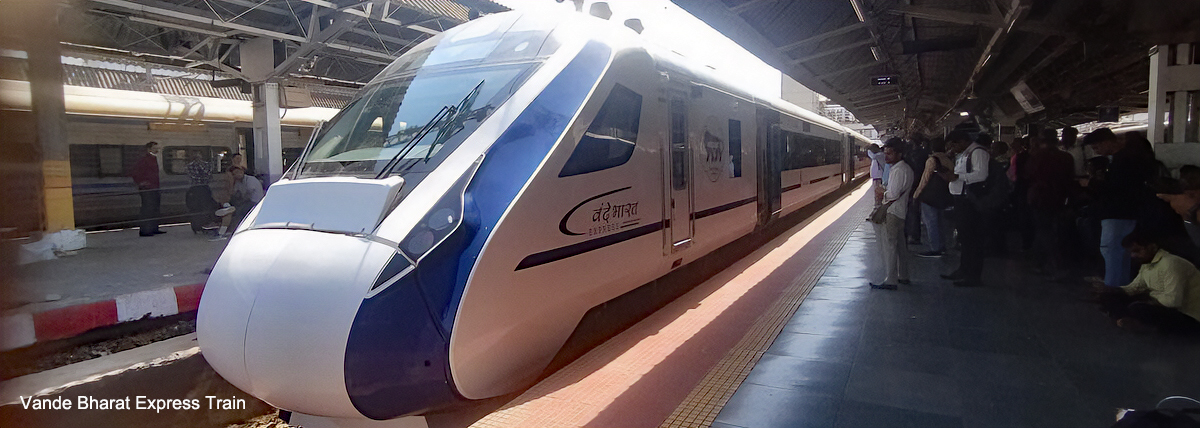
Day 5: Train to Aurangabad :
This morning is free to explore Mumbai on your own. After an early lunch, we'll catch our train to Aurangabad. Drive from Hotel Fort Residency to Chatrapati Shivaji Maharaj Train Station (0.8 miles in 6 minutes). Jaina Vande Bharat Train departs from the Chatrapati Shivaji Maharaj Train Station at 1.10 pm and arrives in Aurangabad Station at 19.10 pm). Overnight in hotel in Aurangabad.
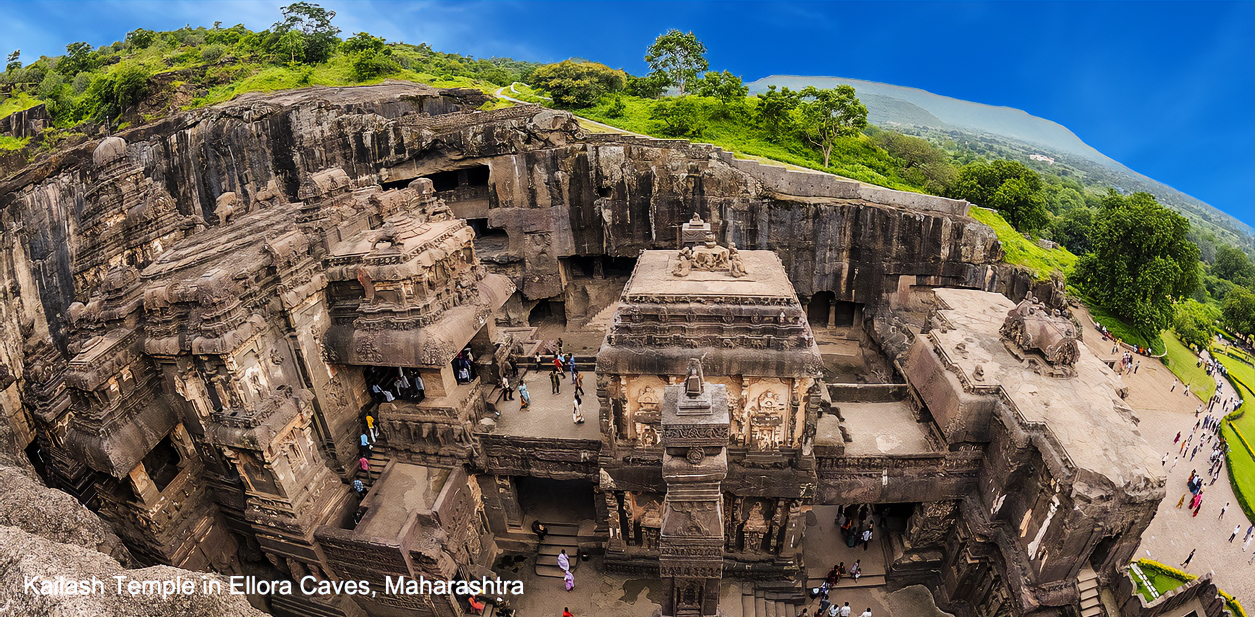
Day 6: Daulatabad Fort and Ellora :
This morning, visit the Daulatabad Fort, towering 250 meters above the surrounding countryside on a volcanic lava rock. Its three main walls use spike-studded doorways as ingenious defenses against elephant charges. The group of caves are recognized as UNESCO World Heritage Site. The earliest caves (cave # 1 to 12) are of Buddhist Mahayana origin and date from 6th to 8th centuries CE. The Brahmanical caves (# 13 to 29) including the giant monolithic Kailash Temple (# 16) date from 7th to 10th centuries. The Jaina group of caves (caves 30 – 34) is exquisitely carved with fine, delicate sculptures, and includes fine paintings dedicated to the Digambara sect. Through their art and architecture, the Ellora Caves serve as a window to ancient India, including socio-cultural phenomena, material culture, politics, and lifestyles. Witness the rock-cut masterpiece, the Kailasa Temple, a replica of the mountain abode of Siva: it measures an astounding 33 meters deep by 81 meters long and 47meters wide, and the stonemasons removed three million cubic meters of rock to create it. On the way back to Aurangabad stop at Bibi- ka Maqbara, an imitation of the Taj Mahal built as a mausoleum for Aurangzeb's queen. Later visit the austere and very simple grave of the sixth Mughal Emperor Aurangabad in a Sufi enclave. Overnight in hotel.
Day 7: Full day excursion to Ajanta Caves :
Ajanta Caves are about 66.5 miles from Aurangabad. They were carved out of a steep rock side in a horseshoe shaped gorge below which the Waghora River flows. Its source is just near the caves. At a vantage point that is now a popular viewing site, in 1819 CE, a group of British soldiers were wonderstruck by the few sections of the caves that were visible through the dense foliage covering the entire façade of the Ajanta Caves. The Ajanta caves are exclusively Buddhist. There are altogether 29 caves of which the cave numbers 2, 3, 5, 8, 23 to 25 and 28 are unfinished. The numbers given to the caves are merely for convenience and do not represent their chronological order. Some caves have sculptures whereas the others have wall paintings also. These paintings cannot be designated as frescos technically as in the western painting style because the paint in Ajanta and in other places in India was not applied on wet surface like in European frescos. These paintings originating from the sixth and seventh centuries CE are much older than the paintings of the Renaissance Period in Europe. They represent the same importance and significance in the history of Asian Art as the Renaissance Period paintings have for the history of European Art. All Buddhist painting in South East Asia, Sri Lanka, Burma, China, Korea and Japan was inspired by the wall paintings of Ajanta. The sculptures and paintings at Ajanta depict scenes from life of Sidhartha Gautam Buddha and from the Jataka tales of Bodhisattvas or previous incarnations of Buddha. The Chaitya (prayer or meditation halls) cave numbers 9 and 10 as well as the Vihara (residential monasteries) cave numbers 12 and 13 belong to the first phase dating from second century BCE to the first century BCE. The Chaitya cave numbers 19, 26 and 29 as well as the Vihara cave numbers 1 to 7, 11, 14 to 18, 20 to 25, 27 and 28 are from the second phase dating from fifth century CE to sixth century CE. The unfinished caves mentioned above could be from sixth and seventh century CE. The caves that have wall painted murals are mostly of Mahayana period because the earlier paintings have eroded or faded.
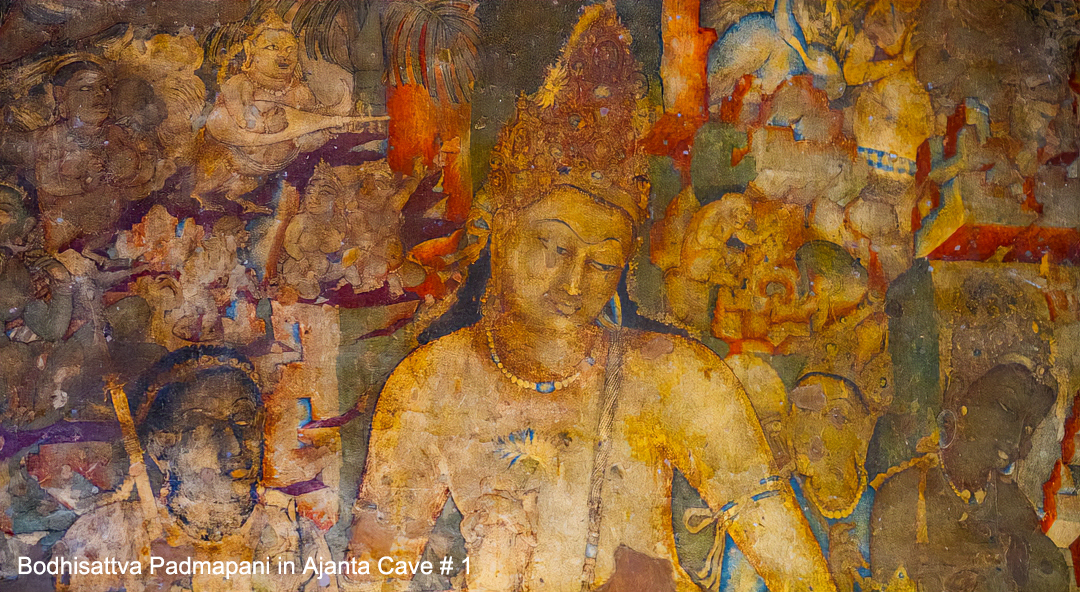
In the early seventh century CE the Chinese Buddhist pilgrim and student, Hsuan T’sang visited the site of Ajanta caves and was amazed to see the immensity and the aesthetic beauty of the works of sculpture and painting in these caves. The Buddhist monks lived, carved gigantic caves into the granite surface of the mountain wall, meditated, prayed, sculpted and painted beautiful scenes from the life of Buddha and his previous incarnations as they imagined after reading the Jataka tales. Generation after generation of ascetic Buddhist monks worked for more than 900 years to create the wonder that Ajanta Caves are today. The Ajanta Caves were declared UNESCO World Heritage Site in 1983. After sightseeing of the caves drive back to Aurangabad. Once we arrive back in Aurangabad, you will board an overnight train to Hyderabad. Air-conditioned first-class sleeper carriages are comfortable. Depart by Ajanta Express Train departing at 10.45 pm. In case of a small or larger group participating in this tour, this journey will be with air-conditioned 2nd class sleeper coach because the AC 1st class has less accommodation.
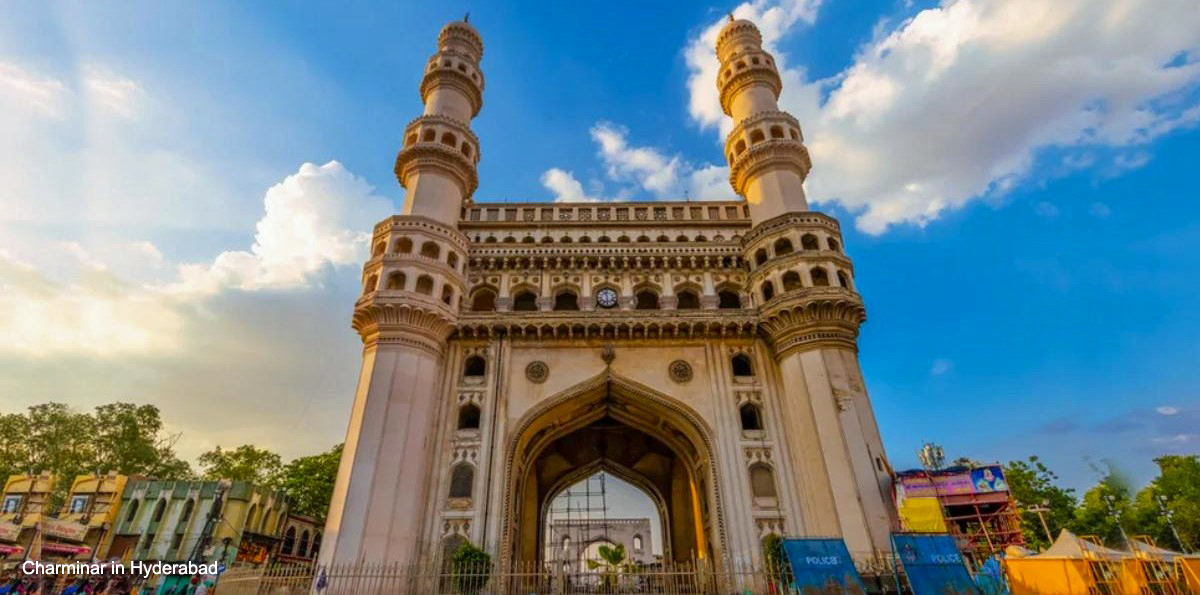
Day 8: Aurangabad – Hyderabad :
Arrive in the morning at MJF Malkajgiri Train Station in Hyderabad city at 8.28am. After welcome at the train station by our local representative transfer to hotel. The train station is 8.7 miles from Fairfield by Marriott Hyderabad Hotel in Gachibowli area of the city, it has the fifth largest economy in India. Hyderabad is the largest city in the Andhra Pradesh state and forth largest in population in India with a city population of 6.9 million within the city limits and 9.7 million in the metropolitan area. Golcunda Fort (round shaped fort) is located about 11 kilometers of 7 miles from Hyderabad city. The fort originally built by the Kakatiya Dynasty (1163 to 1323 CE). Muhammad Quli Qutub Shah of the Qutb Shahi Dynasty established the city from the older Golconda Fort to outside the fortified area in 1591 CE. With an eleven kilometers perimeter, 15- to 18-foot-high walls and about 70 ramparts and 8 huge gates, the fort appears nothing short of amazing. What makes the fort stand out is its system of acoustics. The sounds of the claps made at the entrance of the fort can be clearly heard at the top of the hill. You can also see two pavilions outside the fort built on rock namely, Taramathi Gana Mandir and the Premamathi Nritya Mandir, where the legendary sisters, Taramathi and Premamathi resided. It is said that the two sisters performed (sang and danced) on a circular shaped dais at the top of the structure, Kala Mandir. This could be visible from the king's court from the top of the fort. The other highlight is a light and sound show which draws a lot of people. The legendary Bollywood actor, Amitabh Bachchan lent his voice for the shows held here. The show which includes audio and visual effects can be watched in English, Hindi and Telegu languages. The main gate being Fateh Darwaza which marked the victorious march of King Aurangzeb. The door is of 13 ft. width and 25 ft. length and was built with steel spikes to protect it from elephants. The Balahisar Darwaza is yet another magnificent structure. Its architecture is also the embodiment of Nawabi culture and style. The eastern gateway is the biggest gate and the only entrance open to visitors now. Constructed on a hill, this intelligently planned architectural splendor has excellent ventilation which used to be a huge respite during the summers for the royals. It is believed that there is an underground tunnel which starts from Durbar Hall in the fort to the foothills. Bahmani Dynasty had ruled from Gulbarga from 1347 CE when Ismail Mukh rebelled against the Sultan Muhammad bin Tughlaq of Delhi and Daulatabad. He abdicated in favor of Safar Khan who actually established the Bahmani Dynasty. The dynasty ruled from 1347 to 1425 CE from Gulbarga and from 1425 to 1527 CE from Bidar. They were followed by Qutub Shahi Dynasty that ruled from 1519 to 1591 CE from Golconda Fort. They later expanded to build the city of Hyderabad from 1591 to 1687 CE. The Nizam title of the state and the rulers was an abbreviation of Nizam ul Mulk, a title that was bestowed on Asaf Jah by the Mughal Emperor Farrukhsiyar (1713 to 1719 CE). This dynasty went on to become the richest not only in India but later even the richest in the world, in large part due to revenues from the diamond mines near the Golconda Fort. In the late morning explore the bustling bazaars and colorful Islamic monuments of this energetic capital. In the morning head into the Old City and visit the Birla Temple and the Charminar or 'Four Towers', built to celebrate the end of a plague in 1591. This magnificent cream square archway stands on four 56-meter-tall towers near to the colossal black granite Mecca Masjid Mosque, the sixth largest mosque in India, which can accommodate up to 10,000 worshippers. In the afternoon, visit the extensive ruins of the Golconda Fort, its citadel towering 120 meters above the 16 battlements. Intriguing elements to the fort include the excellent acoustics, hot and cold-water system, natural air conditioning and Turkish Baths. Built by the Qutb Shahi dynasty, the fort was once considered impregnable and even its massive gates were equipped with elephant proof spikes. Battles fought here were significant in the struggle between the Moghuls and Qutb Shahi kings, who once dominated the area. You will also visit the nearby Qutb Shahi tombs. There are ten tombs in the area, all made of black granite or greenstone and housed beneath an onion dome. The most impressive is that of King Muhammad Quli Qutb Shah, the founder of Hyderabad who ruled until 1612 CE. Overnight in hotel in Hyderabad.
Day 9: Hyderabad – Bidar (by Road) :
After breakfast drive 142 kilometers of 88 miles in about 3 hours from Hyderabad to Bidar on a rather bumpy but leisurely ride. On arrival, we'll visit Bidar's fort with its ruined palaces and tombs of the Bahamani Kings. Large parts of the fort are now in ruins, but the walls remain giving us a good idea of how vast the place would have been. We'll walk through the formal gardens before making a short stop at cannon point to see one of the larger bastions used to protect the city against invaders. Overnight in hotel in Bidar.
Day 10: Bidar - Gulbarga – Bijapur (Vijayapura) by Road :
After breakfast drive about 116 kilometers or 72 miles in about 2 hours to the town of Gulbarga (aka Kalaburgi) in the neighboring state of Karnataka that was established by the Bahmani Dynasty. This city is famous for its shrine of the Sufi saint, Khwaja Banda Shah Nawaz but is also popular for its Hindu Sharana Basaveshwara Temple and the Buddha Vihar, a complex built in 2007 having elements of Sanchi, Sarnath and Ajanta Buddhist sites. The tour of the city will include the Bala Hissar Citadel, the beautiful domed Jami Masjid Mosque and the mausoleums of Bahmani Dynasty rulers. Later drive about 102 miles in about 2 hours 45 minutes to Bijapur (now known by its ancient name of Vijayapura). Overnight in hotel in Vijayapura.
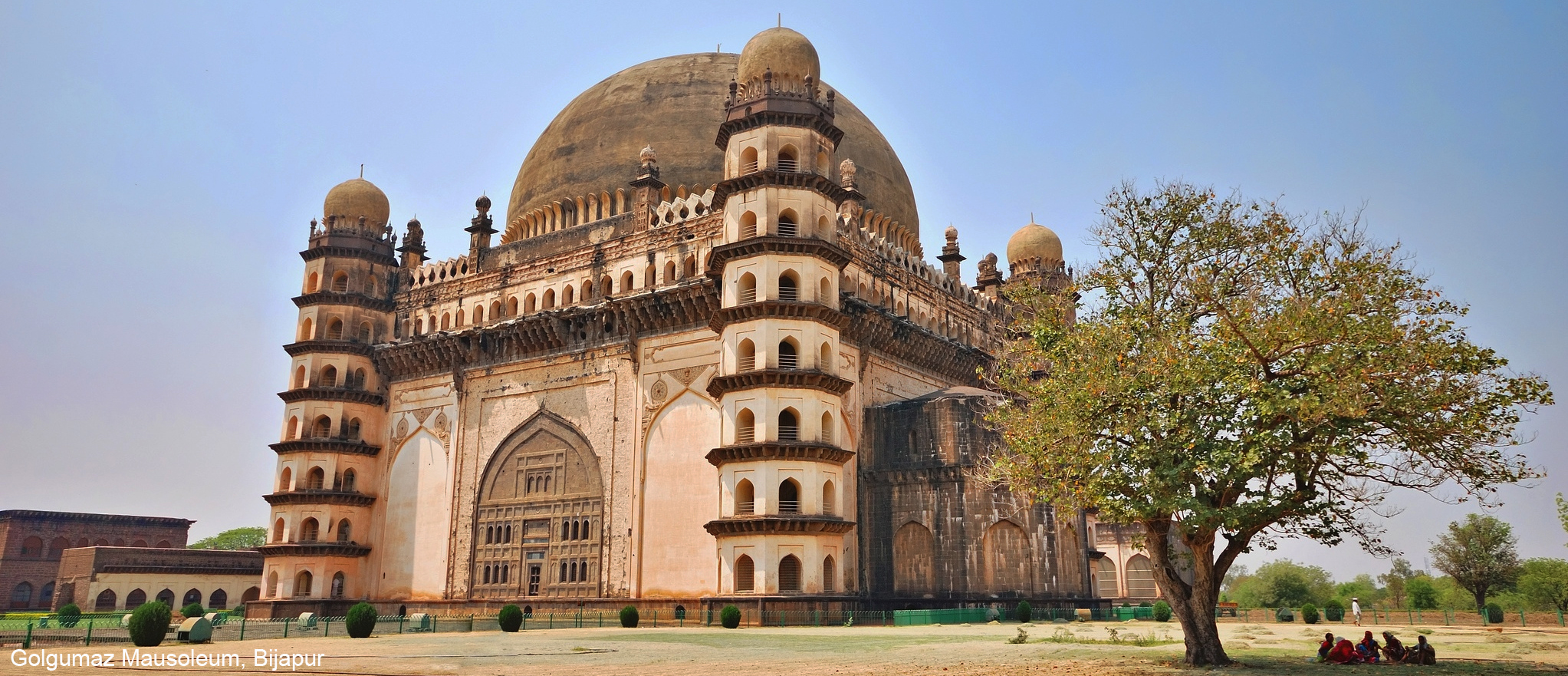
Day 11: Bijapur (Vijayapura) – Badami :
After breakfast you will visit the famous Gol Gumbaz. Gol Gumbaz is the most famous monument in Vijayapura. It is the tomb of Mohammed Adil Shah (ruled 1627–1657). Some of his relatives are also buried in this grand mausoleum. It is the second largest dome ever built, next in size only to St Peter’s Basilica in Rome. A particular attraction in this monument is the central chamber, where every sound is echoed seven times. Another attraction at the Gol Gumbaz is the Whispering Gallery, where even minute sounds can be heard clearly 37 meters away. Gol Gumbaz complex includes a mosque, a Naqqar Khana (a hall for the trumpeters) (now it is used as museum) and the ruins of guest houses. In the surrounding ornamental gardens is an archeological museum. Before leaving Bijapur, visit the Jami Masjid Mosque and stroll through the bustling daily market. The journey then continues to Badami (119 kilometers or 74 miles in about 2 hours by road). Overnight in hotel in Badami.

Day 12: Tour of Badami and drive to Hospet :
This morning, wake up in Badami. Once the capital of the Chalukyan, Badami is now a small village - with a busy bazaar - nestled between sandstone hills. We'll take a short drive to the famous Cave Temples of Badami. A UNESCO World Heritage Site, the temples were hewn out of solid rock as early as 550 CE and their interiors are lavishly adorned with reliefs and statues, one even containing an 18-armed Shiva. Later this morning, we'll drive to Pattadakal, situated on the banks of the Malaprabha River. Another World Heritage Site, its pink-tinged sandstone temples date back to the 7th century and represent a mixture of South and North Indian temple styles, confirming its importance as a meeting point of both traditions. After a guided tour here, we'll stop at the temples of Aihole. The sheer number of Aihole's 70 temples brings to life the glories of the post-Gupta period and reveals the genesis of Hindu medieval art (c.600 CE). Stopping to visit several of the temples, you will finally continue to our destination for today, the town of Hospet, your base from which you will+ explore the astonishing archaeological site of Hampi. Overnight in hotel in Hampi.
Day 13: Full day in Hampi :
Granite, jagged rocks jutting out over a lunar landscape, belies the massive landscape of boulders that forms the view of Hampi, an intriguing, ancient capital of a mighty south Indian empire. These gigantic monoliths that are eroded by natural elements over eons of years define the backdrop of amazing Hindu religious and secular architecture of four dynasties starting with Sangama Dynasty (1336-1485 CE through Saluva Dynasty (1485-1505 CE), Tuluva Dynasty (1505 – 1570 CE) to finally Aravidu Dynasty from 1570 to 1646 CE. Even more defining are the region’s 1,600 immaculately preserved 14th-to-16th century granite Hindu temples, palaces, and markets with reliefs and art depicting gods and themes from ancient Hindu scriptures. Hampi is described in Hindu scriptures as the monkey kingdom of Kishkinda, the region around the Tungabhadra River (then known as Pampa Sarovara) near Hampi in present day Vijayanagara District, Karnataka. Lord Rama during his forced forest exile came to this place in search of his abducted wife, Sita. You will be pointed to noteworthy episodes of Ramayana like the birthplace of monkey god, Hanuman, an ardent disciple of Lord Rama and the very place where Lord Rama shot the arrow that killed the Raja Bali. The fabulously rich princes of Vijayanagar Dynasty built Dravidian temples and palaces between the 14th and 16th centuries. Conquered by the Deccan Muslim confederacy in 1565 CE, the city was pillaged over a period of six months before being abandoned. The austere and grandiose site of Hampi comprise mainly the remnants of the capital city of Vijayanagara Empire (14th-16th Cent CE), the last great Hindu Kingdom in southern India.
The property encompasses an area of 41 square kilometers or 16 square miles, located in the Tungabhadra basin in Central Karnataka, Bellary District. The Krishna temple complex, Narasimha, Ganesa, Hemakuta group of temples, Achyutaraya temple complex, Vitthala temple complex, Pattabhirama temple complex, Lotus Mahal complex are some of the most important highlights of this amazing temple and secular architecture. Suburban townships (puras) surrounded the large Dravidian temple complexes containing subsidiary shrines, bazaars, residential areas and tanks applying the unique hydraulic technologies and skillfully and harmoniously integrating the town and military architecture with surrounding landscape. The remains unearthed in the site delineate both the extent of the economic prosperity and political status that once existed indicating a highly developed society. Suddenly destroyed in 1565 CE after the battle of Talikota, the ancient ruins are almost ethereal, a place of departed spirits. Aim to visit the temples of Virupaksha and Vittala, with their remarkable sculptures, and amid the desolate and fantastic boulder-heaped landscape and come upon the Queen's Bath and the richly carved King's Throne, the finely sculptured pillars of the Ramachandra Swami Shrine, the vaulted Elephant Stables, the two-storied Lotus Pavilion, and the huge granite image of Narasimha, one of Vishnu's incarnations. The city was reputedly the size of Rome at its peak, with a population of half a million people. After sightseeing a short drive will bring you to the Hospet train station to board the HAMPI EXPRESS departing at 9.10 pm.
Day 14: Bangalore :
TArrive in Bangalore Train Station at 5.50 am. Transfer to day room in hotel in Bangalore. Half day sightseeing in Bangalore. After farewell dinner transfer to Bangalore International Airport for flight returning to USA.
INCLUSIONS (Please call us for price) :
- Airport / Train Station / Hotel welcome on arrival and departure in each city.
- 3 to 5-star hotel overnights in double or twin occupancy.
- Breakfasts and Dinners in hotels; lunches during sightseeing in city restaurants.
- 3 train journeys of which 2 are overnight.
- Local guides in each city, for groups & on request also for private tours an accompanying escort will be provided.
- City sightseeing and intercity travel by AC car, van or coaches.
- Two bottles of water per person in car/van/coach during the day.
- Entrances to monuments and sites.
- Roundtrip-trip boat ride from the pier near Gateway of India to Elephanta Caves in Mumbai.
- Farewell dinner in Bangalore.
EXCLUSIONS :
- Roundtrip airfare from your home airport to India.
- International travel insurance, we will be glad to assist for insurance.
- Single hotel room occupancy supplement.
- Still and video camera fees in monuments and sites.
- Any expenses of personal nature like food or drinks ordered in hotel rooms, telephone or laundry charges etc..


